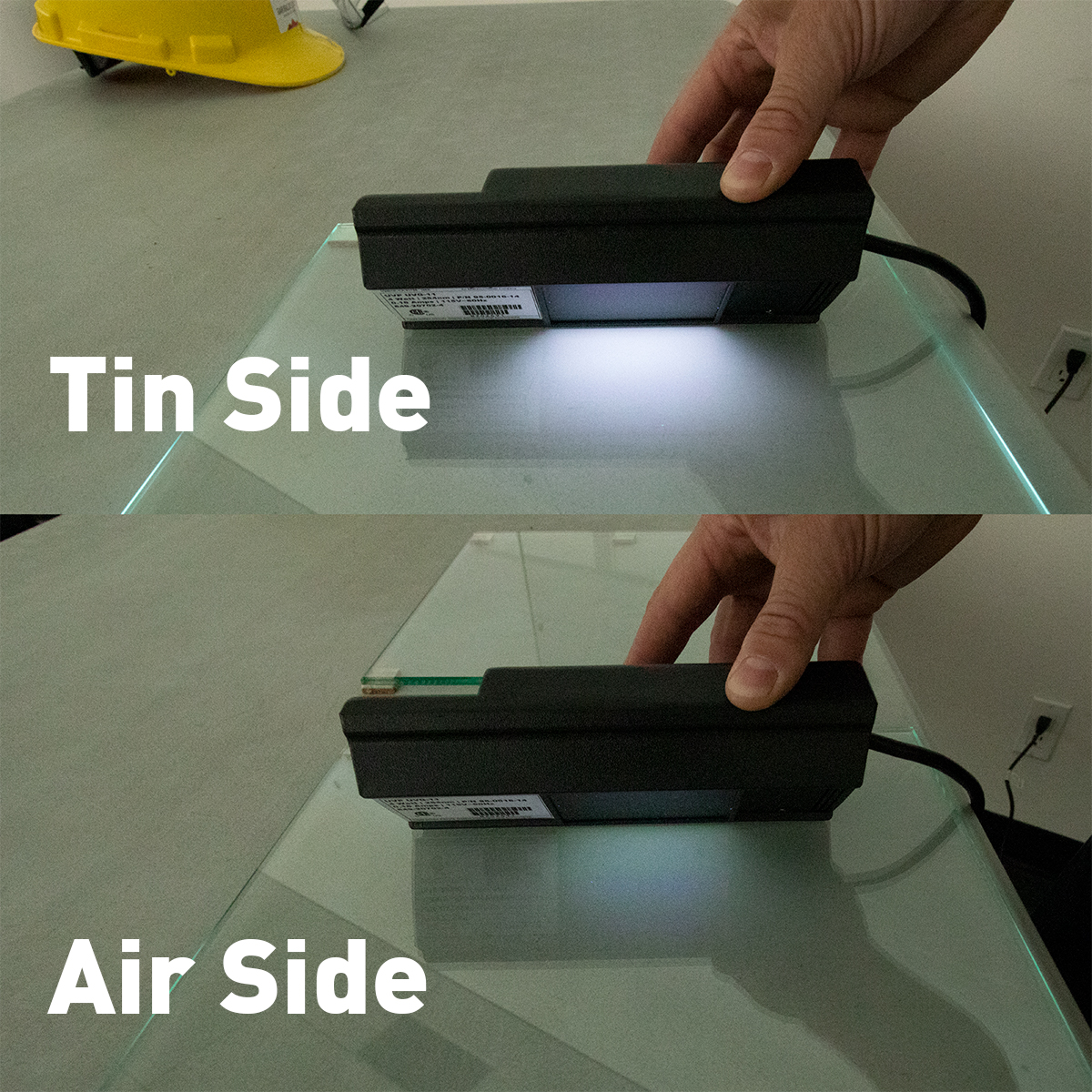Air Side & Tin Side
Did you know that there is an airside and a tin side to all float glass? Clear glass is not actually the same on both sides, even though to the naked eye they look identical.
During the production of float glass, one side of the molten glass comes into contact with a bath of molten tin. Traces of tin or tin oxide are deposited on the surface of glass as it is removed from the molten tin bath. This surface of the glass is identified as the tin side. The opposite side of the glass is denoted as the airside. The Tin side is actually a smoother surface compared to the air side on a microscopic level.
So why is the important in our manufacturing processes? There are 3 areas where this matters.
- Tempering: The tin side should always be down so that the smoother surface is what comes into contact with the conveyor rollers. This produces higher quality tempered glass as the air side surface would be more susceptible to picking up debris or ending up with heat stain.
- Frit: Always apply frit to the air side as the residual tin from the tin side will react negatively with the frit and cause the color to change slightly.
- SGP Lamination: SGP bonds much better to the surface that has the tin compared to the airside surface. When laminating SGP we always try to bond the tin side to the tin side. If that is not possible, then we need to use the adhesion promoter so that the interlayer will bond properly. This is only for the SGP. PVB bonds equally for both he tine and the air sides.
How can you tell the difference? All you need to do is shine a tin tester (it is just a black light) on the surface to tell them apart. The short-wave UV radiation causes the tin to glow with a fluorescent (milky white) light. When the lamp is placed on the tin-side and viewed through the glass, a fluorescent glow will be observed. With the lamp on the non-tin side and viewed thought the glass only the violet UV light will be seen. This is because the float glass does not transmit the UV light and the tin coating on the opposite side of the glass is not exposed to the UV radiation.






